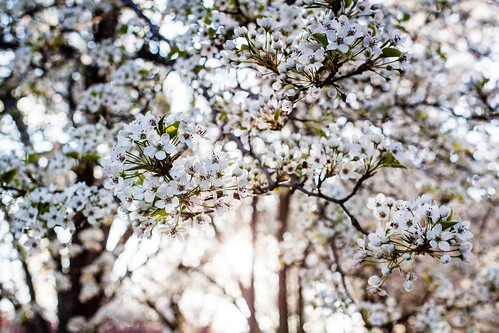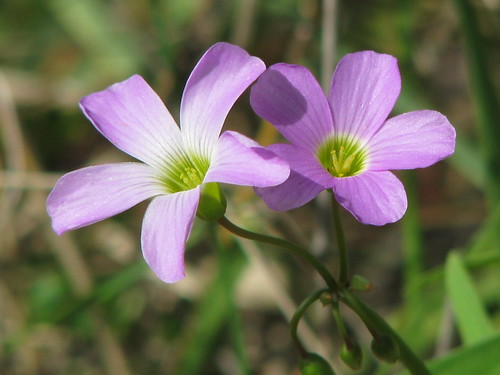Spring Flowering [86/366]
Image by timsackton
Day 86.
I've taken a few minimalist spring flower pictures already, but with the flowers in full bloom all around I wanted to include something a bit different in my 366. The Callery pears that were budding on Day 82 are now wildly in bloom, and I could not resist photographing them today in the evening light. An alternate version is in the comments. Happy spring, everybody.
Looks great in lightbox - hit 'L'!
Taken Mar 26, 2012 in Somerville, Massachusetts, United States
¹⁄₆₄₀ sec at f/3.5, ISO200, no flash.
Lens: EF28mm f/1.8 USM
Chappell Hill Texas
Image by Texas.713
Leaves and flowers of Western Horsenettle, Solanum dimidiatum ....
Image by Vietnam Plants & America plants
Taken on April 29, 2012 in Waco city, Texas state, Southern of America
Vietnamese named : Cà dại lá gai
Common names : Western Horsenettle, TORREY'S NIGHTSHADE.
Scientist name : Solanum dimidiatum Raf.
Synonyms :
Family : Solanaceae / Potato family . Họ Cà
KingdomPlantae – Plants
SubkingdomTracheobionta – Vascular plants
SuperdivisionSpermatophyta – Seed plants
DivisionMagnoliophyta – Flowering plants
ClassMagnoliopsida – Dicotyledons
SubclassAsteridae
OrderSolanales
GenusSolanum L. – nightshade
SpeciesSolanum dimidiatum Raf. – western horsenettle
**** plants.usda.gov/java/profile?symbol=SODI
**** ucjeps.berkeley.edu/cgi-bin/get_JM_treatment.pl?7625,7682...
Perennial 3–8 dm, from rhizome, little-branched; prickles slender, yellowish; hairs stellate, some short-stalked
Leaf 8–15 cm, ovate, wavy to 5–7-lobed, teeth or lobes generally entire
Inflorescence: branches 2–3
Flower: calyx 8–13 mm; corolla 30–50 mm wide, generally purple (white); anthers 8–12 mm, ± equal
Fruit 25–30 mm diam, yellow
**** www.flora.sa.gov.au/efsa/lucid/Solanaceae/Solanum%20speci...
Synonymy
*Solanum dimidiatum Raf., Aut. Bot. 8: 107 (1840)
T: Texas, New Mexico, Arkansas; n.v.
[S. carolinense auct. non L.: H.E. Kleinschmidt & R.W. Johnson, Weeds Queensland 202 (1979)]
Description
Clonal perennial herb to 50 cm, green, pubescent with minute stellate hairs; prickles to 7 mm long, scattered on midrib of lower leaf-surface, petioles and stems.
Leaves ovate to broadly lanceolate; lamina 5–12 cm long, 3–7 cm wide, slightly discolorous, lobed; lobes broadly triangular to oblong; petiole 1–4 cm long.
Inflorescence often forked, few–15–flowered; peduncle 1–2 cm long to first fork; rachis 2–5 cm long; pedicels 1 cm long. Calyx 8–10 mm long; lobes broadly triangular with slender apex, 3–5 mm long. Corolla stellate, shallowly incised, 30–40 mm diam., violet. Anthers 5–7 mm long.
Berry globular, 15–20 mm diam., yellow. Seeds 2.5–4 mm long, pale buff. n=36.
Distribution and ecology
Native to south-eastern U.S.A. Introduced to Australia and naturalised in the Bundaberg area, Qld, where associated with the sugar cane industry.
Bean (2004) records that the species was targetted for eradication and has not been seen since 1972.
Common name
Western horsenettle, Torrey's nightshade
Relationships
While considered to be part of the subg. Leptostemonum its relationships within the group are not known further. It was not part of the Levin et al. (2006) molecular analysis of the subgenus.
**** en.wikipedia.org/wiki/Solanum_dimidiatum
Solanum dimidiatum is a species of nightshade known by the common names Torrey's nightshade, western horsenettle, and robust horsenettle. It is native to the central United States, where it grows in many types of habitat, including disturbed areas. In California it is known as an introduced species and a noxious weed.[1] It is a rhizomatous perennial herb producing an erect stem up to 80 centimeters tall. It is covered in yellow prickles and branched hairs. The leaves may be up to 15 centimeters long, their edges wavy to lobed and sometimes toothed. The inflorescence is a branching array of several flowers. Each flower has a bell-shaped corolla measuring 3 to 5 centimeters wide. It is lavender to purple, or white. The five large, yellow anthers are about a centimeter long. The fruit is a spherical yellow berry up to 3 centimeters wide.
**** www.kswildflower.org/flower_details.php?flowerID=376
www.kswildflower.org/largePhotos.php?imageID=2128&aCa... : LEAF PRICKLES
www.kswildflower.org/largePhotos.php?imageID=2130&aCa... : FLOWERS PICTURE
Picture A Day December 13, 2009 - Pink Woodsorrel (Oxalis debilis Kunth) at Hamilton Pool
Image by mlhradio
The gentle pink woodsorrel (Oxalis debilis Kunth) - while not native to North America, it is now a common wildflower found throughout the southeastern United States. These flowers were blooming everywhere in the early fall around Hamilton Pool in western Travis County.
You can view more photos from my 2009 'Picture a Day' set at: www.flickr.com/photos/matthigh/sets/72157625855768121/
And the fun continues with a Picture a Day through 2010 at: www.flickr.com/photos/matthigh/sets/72157620610035860/
Western Horsenettle, Solanum dimidiatum with flowers and leaves ....
Image by Vietnam Plants & America plants
Taken on May 28, 2012 in Waco city, Texas state, Southern of America.
Vietnamese named : Cà dại lá gai
Common names : Western Horsenettle, TORREY'S NIGHTSHADE.
Scientist name : Solanum dimidiatum Raf.
Synonyms :
Family : Solanaceae / Potato family . Họ Cà
KingdomPlantae – Plants
SubkingdomTracheobionta – Vascular plants
SuperdivisionSpermatophyta – Seed plants
DivisionMagnoliophyta – Flowering plants
ClassMagnoliopsida – Dicotyledons
SubclassAsteridae
OrderSolanales
GenusSolanum L. – nightshade
SpeciesSolanum dimidiatum Raf. – western horsenettle
**** plants.usda.gov/java/profile?symbol=SODI
**** ucjeps.berkeley.edu/cgi-bin/get_JM_treatment.pl?7625,7682...
Perennial 3–8 dm, from rhizome, little-branched; prickles slender, yellowish; hairs stellate, some short-stalked
Leaf 8–15 cm, ovate, wavy to 5–7-lobed, teeth or lobes generally entire
Inflorescence: branches 2–3
Flower: calyx 8–13 mm; corolla 30–50 mm wide, generally purple (white); anthers 8–12 mm, ± equal
Fruit 25–30 mm diam, yellow
**** www.flora.sa.gov.au/efsa/lucid/Solanaceae/Solanum%20speci...
Synonymy
*Solanum dimidiatum Raf., Aut. Bot. 8: 107 (1840)
T: Texas, New Mexico, Arkansas; n.v.
[S. carolinense auct. non L.: H.E. Kleinschmidt & R.W. Johnson, Weeds Queensland 202 (1979)]
Description
Clonal perennial herb to 50 cm, green, pubescent with minute stellate hairs; prickles to 7 mm long, scattered on midrib of lower leaf-surface, petioles and stems.
Leaves ovate to broadly lanceolate; lamina 5–12 cm long, 3–7 cm wide, slightly discolorous, lobed; lobes broadly triangular to oblong; petiole 1–4 cm long.
Inflorescence often forked, few–15–flowered; peduncle 1–2 cm long to first fork; rachis 2–5 cm long; pedicels 1 cm long. Calyx 8–10 mm long; lobes broadly triangular with slender apex, 3–5 mm long. Corolla stellate, shallowly incised, 30–40 mm diam., violet. Anthers 5–7 mm long.
Berry globular, 15–20 mm diam., yellow. Seeds 2.5–4 mm long, pale buff. n=36.
Distribution and ecology
Native to south-eastern U.S.A. Introduced to Australia and naturalised in the Bundaberg area, Qld, where associated with the sugar cane industry.
Bean (2004) records that the species was targetted for eradication and has not been seen since 1972.
Common name
Western horsenettle, Torrey's nightshade
Relationships
While considered to be part of the subg. Leptostemonum its relationships within the group are not known further. It was not part of the Levin et al. (2006) molecular analysis of the subgenus.
**** en.wikipedia.org/wiki/Solanum_dimidiatum
Solanum dimidiatum is a species of nightshade known by the common names Torrey's nightshade, western horsenettle, and robust horsenettle. It is native to the central United States, where it grows in many types of habitat, including disturbed areas. In California it is known as an introduced species and a noxious weed.[1] It is a rhizomatous perennial herb producing an erect stem up to 80 centimeters tall. It is covered in yellow prickles and branched hairs. The leaves may be up to 15 centimeters long, their edges wavy to lobed and sometimes toothed. The inflorescence is a branching array of several flowers. Each flower has a bell-shaped corolla measuring 3 to 5 centimeters wide. It is lavender to purple, or white. The five large, yellow anthers are about a centimeter long. The fruit is a spherical yellow berry up to 3 centimeters wide.
**** www.kswildflower.org/flower_details.php?flowerID=376
www.kswildflower.org/largePhotos.php?imageID=2128&aCa... : LEAF PRICKLES
www.kswildflower.org/largePhotos.php?imageID=2130&aCa... : FLOWERS PICTURE
Tidak ada komentar:
Posting Komentar